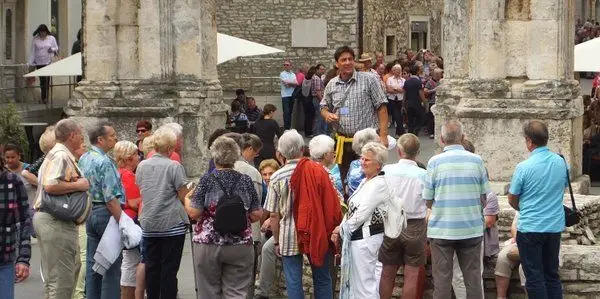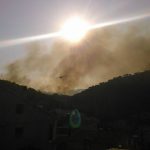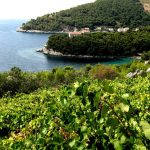June 21, 2020 — For the third day in a row, the number of new cases of coronavirus is growing in Croatia. While there were 11 on Thursday and Friday, there were 19 new on Saturday, which is the highest in the last month and a half.
There are seven new cases in Zagreb. Six confirmed new cases are in Split, two in Osijek, one in Zagreb County, one in Dubrovnik, and one new case has been confirmed in Brod-Posavina County. Most are cases imported from abroad and close contacts of the infected. In other words, the virus is now spreading within families, according to Index.
Many are already mentioning a second wave, but epidemiologists and authorities say it has not yet happened. However, some stricter measures have already been introduced. The Croatian Institute of Public Health recommended stopping visits to retirement homes in Zagreb and Split, and Osijek’s hospital reintroduced a ban on visits.
Stricter controls have been introduced on the borders with Bosnia and Serbia. Interior Minister Davor Bozinovic said more and more people are not allowed to enter the country, adding as many as 70 percent of potential visitors from the two countries were denied entry.
Will we introduce stricter measures? Officials claim there is no need for now. However, there is talk of introducing self-isolation for Croatian citizens returning from Bosnia and Herzegovina and Serbia.
“No matter what we call it, the new wave, the coat of arms of the old wave … The fact is that we have an increase in the number of patients after a couple of weeks of a good situation,” epidemiologist Bernard Kaic told Dnevnik Nova TV.
“If we continue to behave like this, we can expect dozens of patients a day,” Kaic said, adding that the situation could be more favorable if people see that the disease is among us and stick to the measures.
Kaić added that it is logical the infection entered from outside. As for the few cases who do not know where they became infected, he says that it is a matter of relaxation.
“It’s probably because people have relaxed. It’s been too short to say whether the contagion curve is exponential or linear,” Kaic added.
The epidemiologist does not think that the opening of the borders came too soon, but the problem, he emphasized, is that people do not adhere to the prescribed measures.
“With the opening of the borders, measures were prescribed that should be followed by people entering Croatia, which are quite good in terms of preventing the spread of the disease, because our instructions say that within 14 days after entering Croatia, one should measure the temperature every day, avoid crowds, go out only as much as necessary, wear a mask where one cannot maintain distance, but the problem is that no one adheres to that,” Kaić said.
Kaic added that there was no new knowledge about the virus in the past month. That the new coronavirus was still unpredictable and that the self-isolation measure should remain for those who had been in contact with infected people until a vaccine was found.
Kaic says masks should be worn on public transport. “In public transport, a lot of people are close indoors. A mask should definitely be worn.”
He also commented on the upcoming parliamentary elections and pointed out that distance should be maintained. “Voters are not very exposed, but commission members need to protect themselves and wear masks,” Kaic concluded.
Minister Božinović commented for RTL Danas on the possibility of introducing stricter measures.
“There are recommendations that are very precise. And as we said from the beginning, all we achieve is done together, along with directorates and the medical profession.”
Asked if this meant that there would be no binding measures, he said: “All the measures that are being introduced depend on the current situation. We do not think that more restrictive measures should restored. All contacts of the infected have been captured, these are Croatian citizens who were in neighboring countries.
“Since the measure came into force, about 70 percent [of people crossing the border from Bosnia and Serbia] have been rejected. We send people back from the border.”
According to the eVisitor system, about 34,000 tourists registered in Croatia yesterday alone, of which 24,000 were foreigners. As of Saturday, Croatia has 163,000 guests, according to Minister of Tourism Gari Cappelli.
Most guests come from Germany, Slovenia and Austria, and they prefer camps and private accommodation. The most visited cities are Rovinj, Vir, Mali Lošinj, Umag and Poreč.
Due to checks at the border crossings with Slovenia, bottlenecks are forming. Due to the epidemiological situation in Serbia and BiH, Croatian police have tightened measures at border crossings with those countries.
“Today we have 163,000 guests. The daily growth is 30-40 thousand. Today we will have a growth of about 60-70 thousand,” Cappelli said.
He pointed out that given the growth in the number of infected, they did not receive major layoffs.
“The situation is changing from day to day and we are prepared for every possible situation. It must be clear what the procedure is, the protocol, who will pay the costs,” he concluded.










